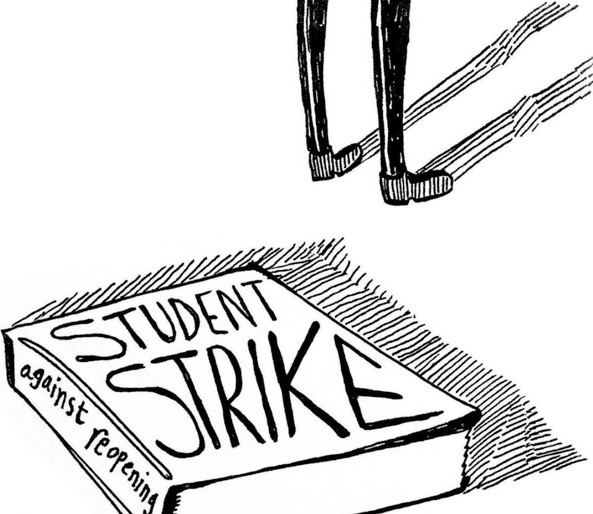Since March 2020, Maryland Governor Larry Hogan has been praised for his handling of the COVID-19 pandemic, but his decisions do not deserve acclaim. Governor Hogan has shown clearly that the safety and health of Marylanders remains at the back of his mind, less important to him than the state’s economic gain and his own political reputation. The reopening of Maryland schools is one of the more recent and disquieting examples of such decisions.
As of early March, nearly all of the 24 local Maryland school systems have students back in their classrooms and hallways. The decision to carry out a partial return to in-person teaching by governor Hogan came as a shock to students, parents and teachers across the state, causing justifiable upset.
Hogan has claimed, “‘There is no public health reason for school boards to be keeping students out of schools,’” but his move to start in-person learning on March 1, 2021 even as the pandemic continues to rage received criticism from the Maryland State Education Association and the Prince George’s County Educators Association among others.
As Hogan left school districts largely to fend for themselves, which is nothing new for majority Black counties like Prince George’s County and Baltimore city, students have risen up to advocate for inequities in education and public health that require attention. One Baltimore student, Kimberly Vasquez, a senior at City College High School, has been leading the way for youth activists.
When the pandemic first hit, Vasquez and her siblings experienced difficulties with internet access that presented a tremendous obstacle to their learning. It was an issue that she began to see was widespread. Vazquez says, “I started noticing this was not just me, this was a lot of people and I was actually fortunate enough to have internet. There were people going to McDonalds to get WiFi just for school.”
Like many students across Baltimore, especially those attending public schools, Vasquez knew this was an issue rooted in something much deeper. A consistent, general lack of resources and funding in education, which Hogan has certainly played a role in perpetuating, left public city schools unprepared for the shift to virtual learning.
Enough was enough, so Vasquez decided something needed to be done to change it.
She and fellow students took to a City Council hearing to provide public testimony on the scale of the issue, which resulted in $3 million dollars of funding from the Baltimore Children and Youth Fund to be directed to Baltimore City Schools to help provide devices and internet access. The fight did not stop there, as she continued work to draft a list of demands for Comcast.
Vasquez continued to engage in her activism, and soon enough she became the Lead Organizer of her high school organization, SOMOS: Students Organizing a Multicultural and Open Society. When Hogan announced schools would be reopening, fearful about the consequences of his decision, she knew where her next focus would be, Vasquez says, “we were in a position where we had to do something to fend for not just ourselves but our teachers and families.”
With the help of other student activists A’niya Taylor and Joshua Lynn, Vasquez organized a school strike and drafted a list of demands (found on SOMOS’ instagram, @somos_cityknights) to be carried out before schools fully reopened.
The list included five demands: equitable opening plan with student voice, safe and accessible public transportation, investment in digital equity, full-time nurses with real resources and a break from standardized testing.
On the subject of reopening schools, Vasquez acknowledged that some students needed to return to in-person learning, saying that her goal for the strike and list of demands was to make sure schools were in a position to take in students safety, and to obtain school resources they have needed from Hogan for a long time.
Requesting things like full-time nurses during a pandemic or guaranteed transportation for students to-and-from school are hardly unreasonable demands, and ones Hogan should have addressed long before Vasquez and fellow students drafted the list and organized protests, long before the pandemic even hit.
Vasquez continued to speak on the importance of government leaders listening to students and teachers, reflecting on how even the teachers had been silenced and banned from organizing strikes. In her final words on Governor Hogan’s reopening plan, she said, “[he is] putting bandaids over rooted problems in the state and that comes from a place of privilege. He hasn’t really experienced what it is to be in Baltimore.”
Hogan’s failures to prioritize the well-being of Marylanders, especially in areas like Baltimore where systemic inequalities thrive, is evident in the work that Vasquez, other students, teachers, families and many more have had to do to feel ready to reopen safely.
When pushed into corners by his forceful policies and reminded of Hogan’s negligent attitude towards their education, students have come out on top, taking control of the narrative he seeks to push about their communities and fighting for equity that has long been lacking under his leadership.

